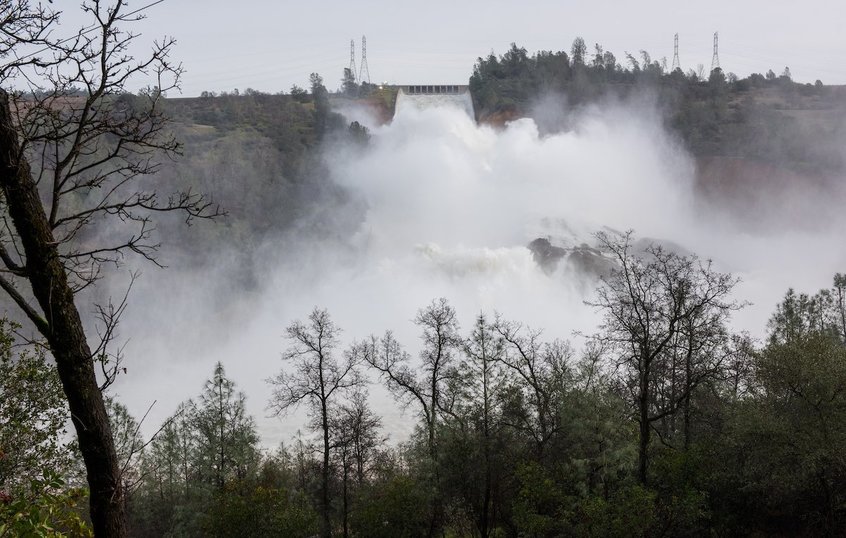Falling water levels behind America’s tallest dam, in Butte County, California, meant thousands of people were allowed to return to their homes yesterday (14 February), but officials are warning that they should be ready to flee again at a moment’s notice because of stormy weather forecast in the coming days.
More than 125 construction crews are working around the clock placing 1,200 tons of material every hour on an emergency spillway that authorities worried would fail, unleashing a wall of water onto communities downstream.
An estimated 188,000 people were ordered to flee their homes at 5.45pm on Sunday, 12 February when the rain-swelled lake behind Oroville Dam rose to its highest-ever level after years of drought, sending thousands of cubic feet of water thundering every second over the previously unused emergency spillway.
Residents must remain prepared for the possibility of an Evacuation Order– Butte County Sheriff’s Office
Alarm grew as the torrent opened up a large hole in the lining of the emergency spillway, prompting concern that the ground underneath the spillway’s concrete wall could give way, leading to an uncontrolled release of water.
However, both the emergency spillway and the dam’s primary spillway held, and released enough water into the Feather River for the level of Oroville Lake to drop.
At 1pm yesterday the Butte County Sheriff’s Office reduced Sunday’s Immediate Evacuation Order to an “Evacuation Warning”, allowing people to return to their homes from shelters set up in Butte and neighbouring counties.
It meant the immediate threat has ended but the potential for an emergency remains and “therefore residents must remain prepared for the possibility of an Evacuation Order”, the sheriff’s office said, adding: “People who have special needs or require extended time to evacuate should consider remaining evacuated.”

“This is what 100,000 cfs looks like”, said California’s DWR on 14 February, via Twitter, describing the force of the water flowing over the primary spillway (DWR/Twitter)
The sheriff’s office said it allowed people to return because inspections by engineers from the California Department of Water Resources (DWR), the Federal Energy Regulatory Commission and the United States Army Corps of Engineers found that that the integrity of the emergency spillway had not after all been not compromised by the erosion.
But residents were urged to be on high alert because more storms are forecast this week, raising the possibility of the lake rising again.
This lends extra urgency to the work underway to restore the integrity of the emergency spillway by plugging the gouge eaten away in its lining.
The DWR said yesterday that more than 125 construction crews were working around the clock placing 1,200 tons of material every hour into the gouge, including using heavy machinery and helicopters to drop bags of rocks, all while progress is monitored by drones.
Top image: Construction crews raced yesterday to fill in a gaping hole in the lining of the emergency spillway ahead of storms forecast for this week (DWR/Twitter)










